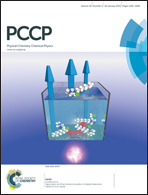Effects of lipid composition on physicochemical characteristics and cytotoxicity of vesicles composed of cationic and anionic dialkyl lipids
Abstract
The behaviors of cat-anionic vesicles composed of dioctadecyldimethylammonium bromide (DODAB) and dihexadecyl phosphate (DHP) with varying lipid composition were investigated through the measurements of size, zeta potential and fluorescence polarization, morphological observations, determination of thermotropic phase behavior, cell viability assay, and examination of entrapment efficiency and colloid stability. DODAB is miscible with DHP in the bilayer domain, which expresses a non-ideal mixing characteristic. The DODAB-rich vesicles show a smaller particle size, higher positive zeta potential, lower main transition temperature, less angular structure, better storage stability, and higher encapsulation efficiency than the DHP-rich ones. Introduction of DODAB into DHP vesicles enhances the membrane fluidity in the ripple and liquid crystalline phases. The membrane fluidity of mixed DODAB–DHP vesicles with the near charge might have a significant effect on the survival of nontransformed human skin fibroblast Hs68 cells. The degree of the cytotoxicity of Hs68 cells is dominated mainly by the charge nature of DODAB–DHP vesicles with varying lipid composition. The results gathered provide necessary information for future drug/gene delivery applications.


 Please wait while we load your content...
Please wait while we load your content...